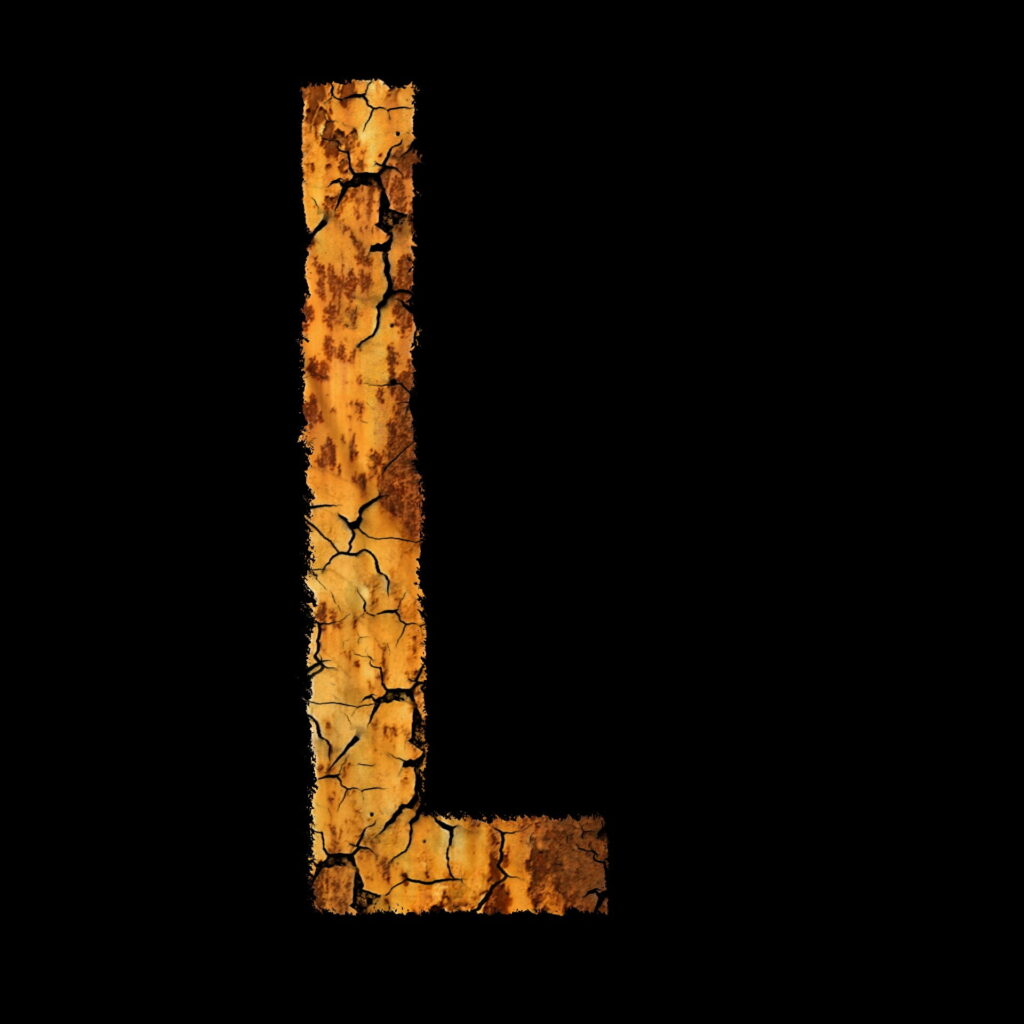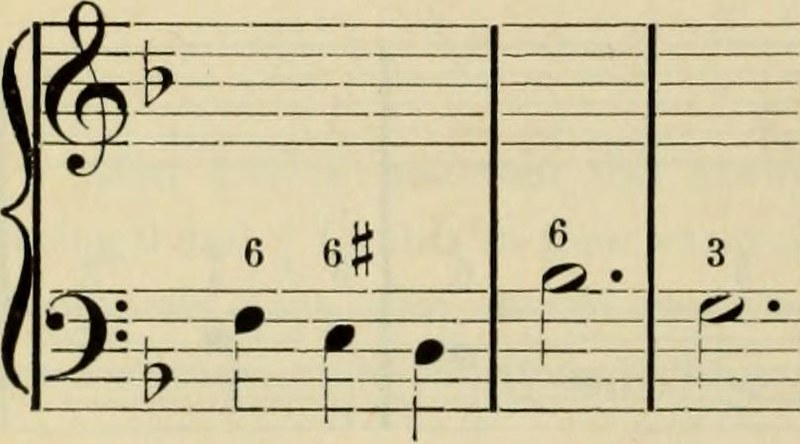The letter L is a ubiquitous and versatile character in the English language, as well as in other languages and fields of knowledge. Whether you’re learning to read and write, exploring the natural or cultural world, or expressing your thoughts and feelings, you’re likely to encounter the letter L in various forms and contexts. In this article, we’ll dive into the world of the letter L and discover its meanings, uses, and wonders.
The Origins and Shapes of The Letter L

Like most letters, the letter L has a rich history and evolution that reflects the cultural and linguistic diversity of its users. The earliest form of the letter L dates back to the Phoenician alphabet, which used the letter called lamedh to represent the sound of “l.” This letter later influenced the Greek lambda, the Etruscan and Latin the letter L, and the Cyrillic el. The shape of the letter L can vary depending on the font, handwriting, or language, but it generally consists of a vertical stroke and a horizontal stroke that meet at a right angle.
The Letter L as a Sound and a Letter
The sound of “l” is one of the most common consonants in English and other languages, and it can be pronounced in different ways depending on the context and accent. For example, the “l” in “lamp” is pronounced with the tongue touching the upper teeth, while the “l” in “ball” is pronounced with the tongue touching the roof of the mouth. The letter L can represent various sounds, such as the initial and final sounds in “love” and “level,” the silent the letter L in “calm” and “half,” and the doubled the letter L in “pillow” and “allergy.”
Words that Start with The Letter L
As the twelfth letter of the English alphabet, the letter L has spawned many words that start with it and define it. Some of the most common and interesting words that start with the letter L include:
- Love: a feeling of deep affection or attachment to someone or something
- Language: a system of communication using words, sounds, and gestures
- Logic: a way of reasoning and drawing conclusions based on evidence and principles
- Literature: written or spoken works of art that express human ideas and emotions
- Leadership: the ability to guide and inspire others towards a common goal
- Life: the condition of being alive and conscious, or the period of time between birth and death
- Law: a set of rules and regulations that govern human behaviour and relationships
- Liberty: the state of being free from oppression or coercion
- Learning: the process of acquiring knowledge, skills, and values through experience and education
- Laughter: an expression of joy or amusement through vocal sounds and facial expressions
Cursive The Letter L and Sign Language The Letter L

If you’re learning to write in cursive or calligraphy, you may wonder how to make a cursive letter L that looks elegant and legible. The cursive of the letter L typically starts with a small loop or curve at the top, then descends diagonally to the baseline, and finally curves upward to the right, resembling a shepherd’s crook or a swan’s neck. You can practice writing cursive Ls in different styles and sizes to find the one that suits your handwriting and aesthetic.
If you’re learning American Sign Language or other sign languages, you may wonder how to make the letter L handshape that represents the letter L. To make the letter L handshape, you form your left or right hand into a fist, then extend your thumb and index finger at a right angle to form a letter L shape. You can use the letter L handshape to sign words like “light,” “like,” “learn,” and “love,” among others.
The Letter L in Chemistry and Roman Numerals

In the world of science and math, the letter L has several applications and meanings. For example, in chemistry, the letter L can refer to a Lewis base, which is a molecule or ion that donates a pair of electrons to form a covalent bond with a Lewis acid. The letter L notation is also used to indicate a chiral ligand in coordination complexes, which are compounds that contain a metal ion surrounded by other molecules or ions that are bound to it.
In Roman numerals, the letter L represents the number 50, which is half of the symbol for 100 (C) and twice the symbol for 25 (XXV). The Romans used Roman numerals to represent their numerical system, which consisted of seven letters (I, V, X, the letter L, C, D, and M) that could be combined to form any integer. Roman numerals are still used today in certain contexts, such as in the numbering of movie sequels, sporting events, and monarchs’ names.
The Letter L in Geography and Landmarks

The letter L is also associated with many places and landmarks around the world, from cities and countries to mountains and lakes. Some examples of places that start with the letter L or contain the letter L in their names include:
- London: the capital and largest city of England and the United Kingdom, known for its history, culture, and landmarks such as Big Ben, the Tower of London, and Buckingham Palace
- Los Angeles: a city in southern California, known for its entertainment industry, beaches, and attractions such as Hollywood, Beverly Hills, and Disneyland
- Lima: the capital and largest city of Peru, known for its colonial architecture, museums, and cuisine
- Lake Superior: the largest freshwater lake in the world by surface area, located on the border between Canada and the United States
- Louvre: a museum in Paris, France, known for its collection of art and artifacts from around the world, including the Mona Lisa and the Venus de Milo
Whether you’re interested in language, science, culture, or travel, the letter L has something to offer. From its ancient origins to its modern applications, the letter L reflects the diversity and creativity of human expression and imagination. By learning more about the letter L and its meanings, you can enhance your knowledge and appreciation of the world around you.
The Letter L in Literature and Language

The letter L has also played a significant role in literature and language. In English, the letter L is the twelfth letter of the alphabet and has a variety of sounds, depending on its position and surrounding the letters. For example, the letter L can be pronounced as a consonant sound in words like “love” and “lion,” or as a vowel sound in words like “table” and “people.” the letter L can also be silent, as in words like “salmon” and “walk.”
The letter L has also been featured in many literary works, from children’s books to classic literature. Some famous literary characters whose names start with the letter L include:
- Lennie Small: a character in John Steinbeck’s novel Of Mice and Men, known for his physical strength and mental disability
- Lucy Pevensie: a character in C.S. Lewis’s The Chronicles of Narnia series, who travels to a magical world and helps defeat an evil queen
- Leopold Bloom: a character in James Joyce’s novel Ulysses, who wanders around Dublin on a single day and experiences various events and encounters
The Letter L in Music

Music is another area where the letter L has had an impact. From genres to instruments, the letter L has been used in many musical contexts. Some examples include:
- Lullaby: a soothing song sung to children to help them sleep
- Lyre: a stringed musical instrument similar to a harp, used in ancient Greece and Rome
- Latin music: a genre of music that originated in Latin America and combines elements of African, European, and indigenous music
- Led Zeppelin: a British rock band that formed in the 1960s and is known for hits like “Stairway to Heaven” and “Whole Lotta Love”
Conclusion
In conclusion, the letter L is a fascinating and versatile letter with a rich history and many meanings. From its role in science and math to its use in literature and music, the letter L has left an indelible mark on human culture and creativity. By exploring the various aspects of the letter L, we can gain a deeper understanding and appreciation of the world around us. So, whether you’re learning a new language, reading a novel, or listening to music, remember the letter L and all that it represents.




